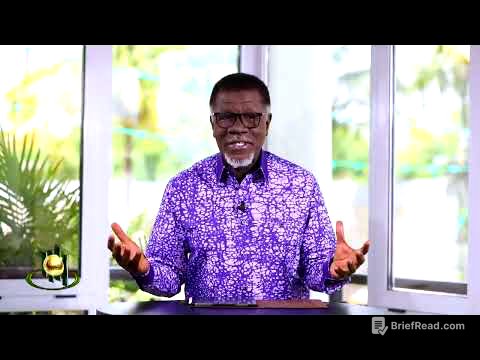TLDR;
This video provides an overview of cholecystitis, focusing on its definition, causes, pathophysiology, symptoms, diagnostic procedures, and medical and surgical management. It explains the inflammation of the gallbladder, detailing how gallstones, infections, injuries, and metabolic issues can lead to this condition. The video also covers common symptoms like pain, nausea, and indigestion, as well as diagnostic methods such as physical examinations, imaging techniques, and lab tests. Finally, it discusses treatment options, including antibiotics, analgesics, and surgical interventions like cholecystectomy and endoscopic procedures.
- Definition and inflammation of the gallbladder
- Causes, pathophysiology, symptoms, diagnostic procedures
- Medical and surgical management
Introduction to Cholecystitis [0:03]
The video introduces cholecystitis as an inflammation of the gallbladder, which stores bile produced by the liver. The gallbladder's function is to store bile, which aids in the digestion of fats. When the gallbladder becomes infected or inflamed, it leads to cholecystitis. The presenter uses diagrams to illustrate the difference between a normal gallbladder and an inflamed one, pointing out the presence of stones and swelling in the inflamed gallbladder.
Causes of Cholecystitis [2:19]
The primary causes of cholecystitis include gallstones, bacterial and viral infections, injuries, abnormal cholesterol metabolism, and infrequent food consumption. Gallstones can block the flow of bile, leading to inflammation. Infections and injuries to the gallbladder can also trigger inflammation. Abnormal cholesterol metabolism can result in cholesterol deposits in the gallbladder, while infrequent food consumption can impair liver function, affecting the gallbladder.
Pathophysiology of Cholecystitis [4:30]
The pathophysiology of cholecystitis involves etiological factors like gallstones causing obstruction in the bile flow. This obstruction increases pressure within the gallbladder, leading to inflammation. The presenter uses a diagram to explain how a gallstone, typically formed in the neck of the gallbladder, can block the bile flow, increasing pressure and causing infection.
Symptoms of Cholecystitis [6:00]
Common symptoms of cholecystitis include pain radiating to the back and right shoulder, nausea, vomiting, and indigestion. Patients may also experience a mild fever and abdominal fullness. Changes in stool color, such as light-colored stools due to bile obstruction, gas formation, and jaundice, are also indicative of cholecystitis. The video also describes Murphy's sign, where pain is elicited upon palpation of the gallbladder during deep inspiration.
Diagnosis of Cholecystitis [10:52]
Diagnosing cholecystitis involves collecting the patient's history and performing a physical examination, including checking for Murphy's sign. Diagnostic procedures include cholecystography (visualization of the gallbladder), X-rays, ultrasonography, CT scans, and MRIs. Additionally, blood tests may reveal increased levels of bilirubin and liver function tests and renal function tests are conducted to identify abnormalities.
Medical Management of Cholecystitis [12:39]
Medical management of cholecystitis includes administering antibiotics for bacterial infections and antiviral drugs for viral infections. Analgesics are prescribed for pain relief. Hospitalization is necessary for patients with severe pain to provide timely care.
Surgical Management of Cholecystitis [13:22]
Surgical management options include cholecystectomy (surgical removal of the gallbladder) and endoscopic procedures. Cholecystectomy is performed when there are stones in the gallbladder or severe inflammation. Endoscopic procedures are used to remove stones from the gallbladder, restoring bile flow. The presenter explains that these procedures aim to remove gallstones or the gallbladder to alleviate inflammation and restore normal function.
![Cholecystitis ( Infection in gall bladder) [ Nursing lecture in hindi M.S.N 1st ]](https://wm-img.halpindev.com/p-briefread_c-10_b-10/urlb/aHR0cDovL2ltZy55b3V0dWJlLmNvbS92aS9zeGxPVjNkTmNhcy9tYXhyZXNkZWZhdWx0LmpwZw==.jpg)






![[ENG SUB] Official Pilot: รักสุดท้าย My Safe Zone The Series | Ch3 Thailand](https://wm-img.halpindev.com/p-briefread_c-10_b-10/urlb/aHR0cDovL2ltZy55b3V0dWJlLmNvbS92aS82YjRVbkRDR1lzSS9ocWRlZmF1bHQuanBn.jpg)

